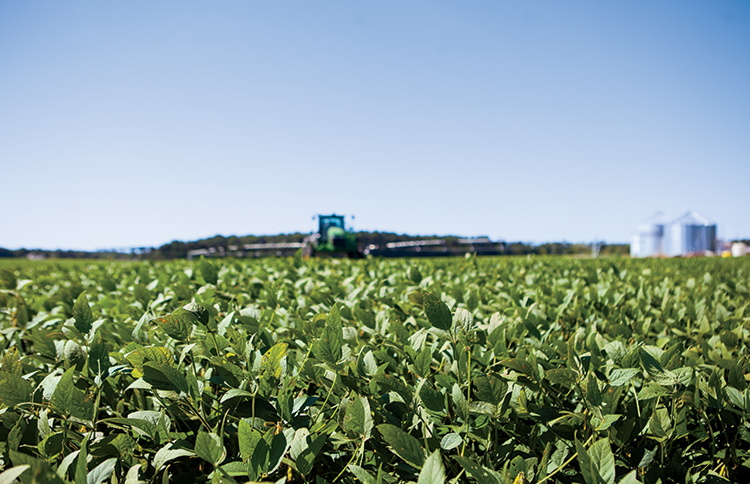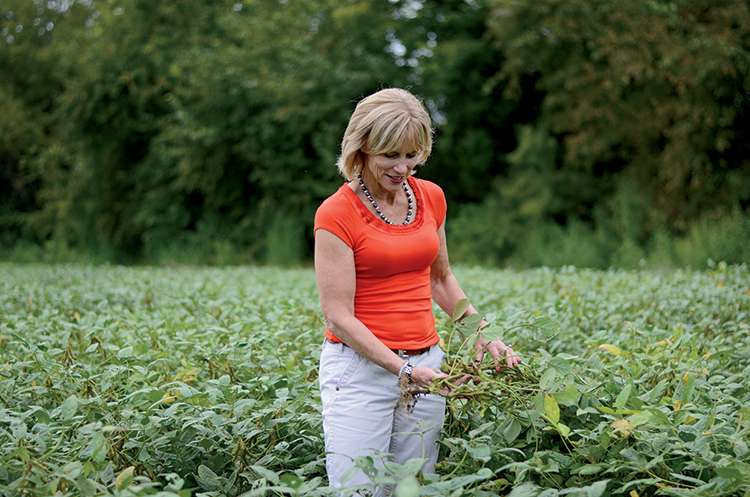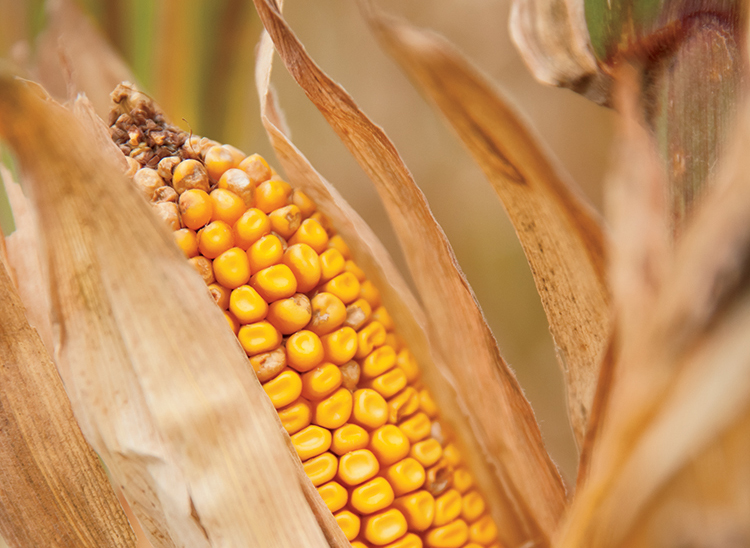Home > Alabama > Alabama Crops & Livestock > Alabama Crops Weather the Storm
Alabama Crops Weather the Storm
Alabama faced severe drought between 2006 and 2012, causing difficulties for row crop farmers and livestock producers. In 2013, rain came in waves, forcing farmers to deal with an entirely different set of challenges.
C. Dale Monks, Ph.D., Auburn University professor and extension row crop agronomist, says effects of excessive water early in the season include seedling and small plant death; lack of plant growth, with stunted plants and limited root systems; loss of nutrients; and a variety of other issues.
The primary problem excessive rain brings is that farmers can’t work in their fields, which equates to loss of income.
“When we do get on the field, it causes compaction that takes years to get back out of the fields,” says Angela Dee, an Aliceville row crop farmer. “When the ground is completely saturated, as it was in 2013, there is no pore space for the oxygen that the plant roots need to use to grow, and it reduces microbial activity in the soil that work to keep the soil healthy to feed the plant. It causes stress on the plants and the soil.”
Dee says the heavy rains delayed planting of several crops and caused future problems with the land and livestock.
“We like to plant corn starting March 1 and finish by the end of March, but in 2013 we did not plant any corn until the last week in March and planted the last corn May 17,” she says. “We harvest wheat starting May 25 usually, but it rained so much, it was the last week in June before we could harvest. It kept raining and raining.”
Another problem: the combine kept getting stuck in the mud and making deep ruts in the fields. That meant more than 1,000 acres of soybeans were not planted.
While it helped the grass grow, the rain made it hard to collect wheat for the winter, which will hurt livestock.
Brandon Moore, former Alabama Farmers Federation Young Farmer director, had a more positive experience with the rain, accounting for an above-average year for the farm.
“With the rainfall we received, we have seen yield increases as high as 50 percent in some areas of our fields. Even our lowest yielding spots have seen 30 to 40 percent increases in yield from the adequate rainfall and good growing conditions,” he says. “The rain and cooler temperatures provided near-perfect growing conditions for our corn crop.”
Economic Impact
Reduced crops are a hardship for the total economy, and the whole state feels the trickle-down effect.
“The effects of excessive rainfall were seen in some of the crops most of the season. For corn, the yields turned out to be very good in most of the state; however, whenever there is a weather catastrophe there is always an area that is worse than others,” Monks says. “In some areas of the state, yields of soybean, corn, cotton, and peanuts will benefit from the rain. In others, the excessive rainfall resulted in disaster; so much so, that the governor requested and received approval from the federal government to declare several counties disaster areas.”
Moore is often amazed at how most people go about their lives without realizing the impact agriculture has on the state.
“When I look at our farm alone and think about the businesses, small and large, that we depend on to keep running, it is easy to see the economic footprint agriculture has on Alabama,” he says. “I am talking about the mechanic shops, industrial electricians, agronomists, accountants, engineers, veterinarians, salesmen, building contractors and input suppliers that we spend thousands of dollars purchasing their goods and services, that in turn generate income and payroll taxes, sales taxes, ad valorem taxes and property taxes.”







